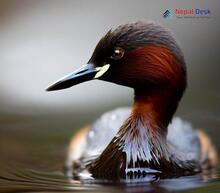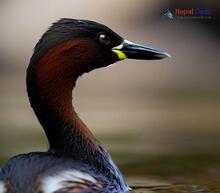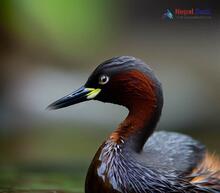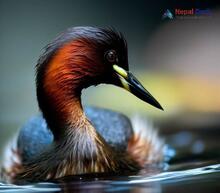Tachybaptus, a group of small diving waterbirds popularly known as "Little Grebes," has piqued the curiosity of bird lovers and researchers alike. These fascinating creatures exhibit unique features and an amazing ability to adapt to diverse environments. In this article, we will take you on a journey through the captivating world of Tachybaptus, discussing their evolution, taxonomy, morphology, and ecology, and highlighting the species discovered in Nepal.
Evolution
The Tachybaptus genus belongs to the Podicipedidae family of birds that came into existence roughly 35-40 million years ago. It is believed that these birds evolved from early wading birds that began to inhabit aquatic surroundings for easier access to food. As time passed, they acquired distinct diving skills and physical adaptations enabling them to survive both on land and in water.
Taxonomy
Tachybaptus is a genus characterized by its incredible diversity, composed of several species primarily identified through geographic distribution, color patterns in their plumage, variations in size, and vocalizations. Some examples of Tachybaptus species are the Least Grebe (Tachybaptus dominicus), Little Grebe (Tachybaptus ruficollis), and Australasian Grebe (Tachybaptus novaehollandiae). Despite similarities in appearance and vocalization making it difficult to distinguish among these species, genetic analysis has proven instrumental in clarifying their taxonomy.
Morphology
Members belonging to the Tachybaptus genus usually measure between 23-29 centimeters in length and weigh around 140-230 grams. This small stature enhances their agility both in flight and underwater diving. Little grebes have short wings with waterproof feathers which assist in their buoyancy and maneuverability while swimming. Their legs are positioned towards the rear of their bodies, and their unique lobed toes help them swim more efficiently.
Ecology
Tachybaptus species are renowned for being resourceful and adaptable birds, showcasing a preference for freshwater environments like ponds, lakes, marshes, and languid rivers. Their diet primarily consists of aquatic invertebrates, tiny fish, and insects. During the mating season, these birds build intricate floating nests crafted from plant materials and secured to submerged vegetation. Parenting is a collaborative endeavor between both male and female little grebes.
Species in Nepal
The Little Grebe (Tachybaptus ruficollis), also referred to as the Dabchick, is the sole identified Tachybaptus species found in Nepal. This petite waterbird has a widespread presence across Asia, Africa, and Europe but favors lowland wetlands within Nepal. Especially during winter months, these birds migrate to southern regions of Nepal in search of warmer climates.
In conclusion, the Tachybaptus genus offers us a fascinating look into the realm of small diving waterbirds. Their intriguing evolutionary journey, rich taxonomy, one-of-a-kind morphology, adaptability to various ecological niches, and occurrence in Nepal make them enthralling subjects for continued study. As we persist with observing and comprehending these birds better, we continue to unveil new insights into the remarkable lives of little grebes amidst the vast landscape of avian biodiversity.




